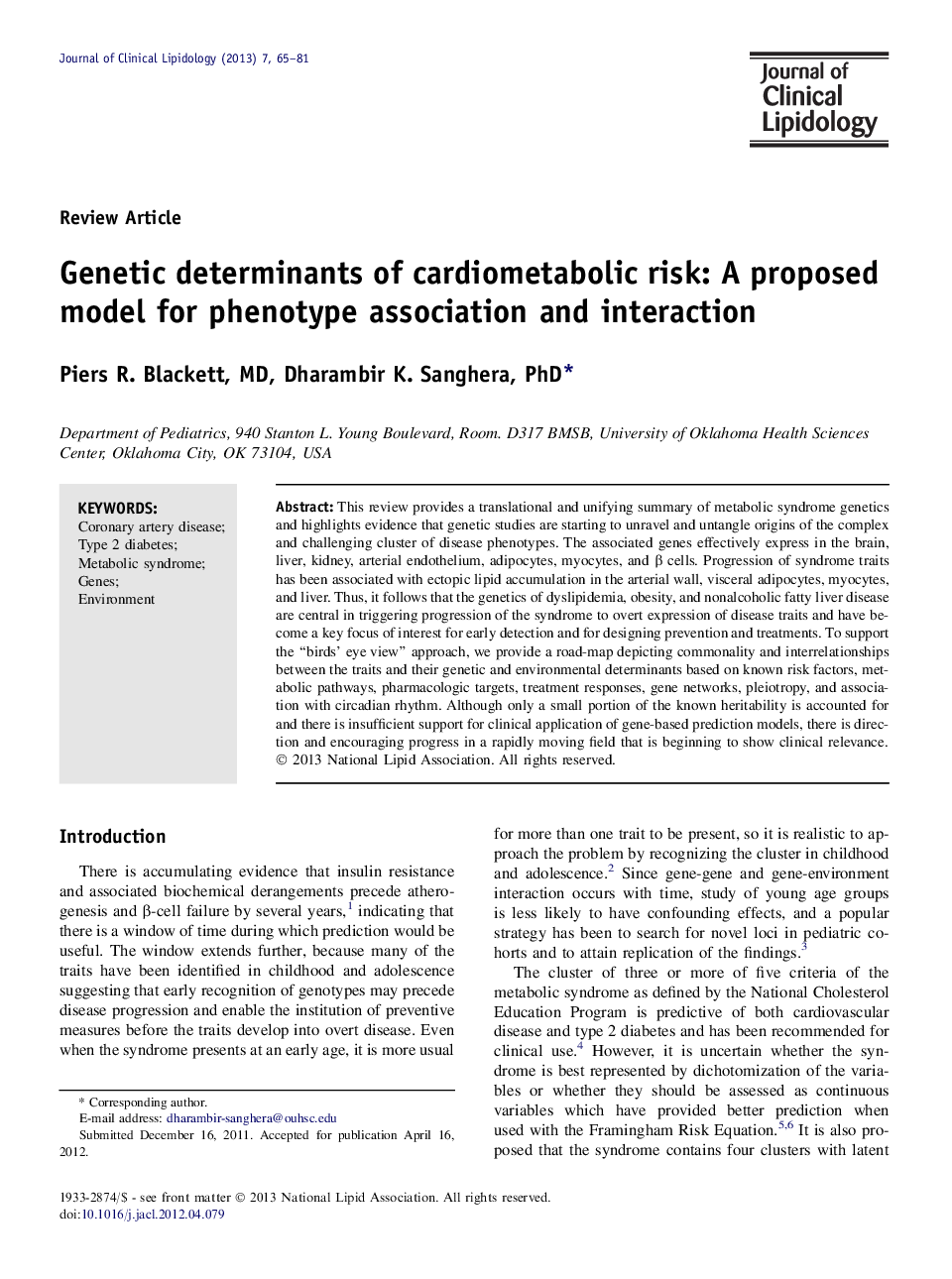| کد مقاله | کد نشریه | سال انتشار | مقاله انگلیسی | نسخه تمام متن |
|---|---|---|---|---|
| 2966603 | 1178810 | 2013 | 17 صفحه PDF | دانلود رایگان |

This review provides a translational and unifying summary of metabolic syndrome genetics and highlights evidence that genetic studies are starting to unravel and untangle origins of the complex and challenging cluster of disease phenotypes. The associated genes effectively express in the brain, liver, kidney, arterial endothelium, adipocytes, myocytes, and β cells. Progression of syndrome traits has been associated with ectopic lipid accumulation in the arterial wall, visceral adipocytes, myocytes, and liver. Thus, it follows that the genetics of dyslipidemia, obesity, and nonalcoholic fatty liver disease are central in triggering progression of the syndrome to overt expression of disease traits and have become a key focus of interest for early detection and for designing prevention and treatments. To support the “birds' eye view” approach, we provide a road-map depicting commonality and interrelationships between the traits and their genetic and environmental determinants based on known risk factors, metabolic pathways, pharmacologic targets, treatment responses, gene networks, pleiotropy, and association with circadian rhythm. Although only a small portion of the known heritability is accounted for and there is insufficient support for clinical application of gene-based prediction models, there is direction and encouraging progress in a rapidly moving field that is beginning to show clinical relevance.
Journal: Journal of Clinical Lipidology - Volume 7, Issue 1, January–February 2013, Pages 65–81